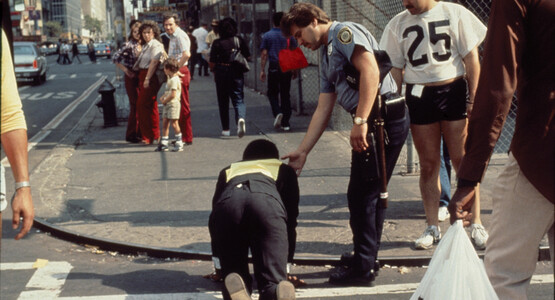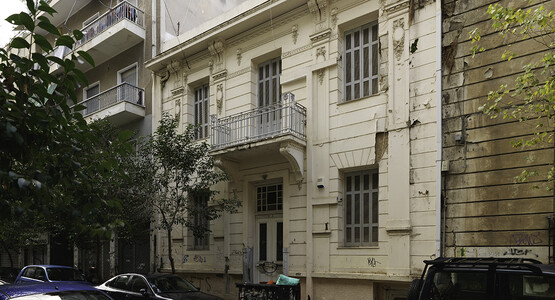Rules that break other rules: Felix Gonzalez-Torres’s ‘candy works’ and the logic of neoliberalism
by Niko Vicario • June 2022
You walk into a museum or a gallery and encounter a pile of sweets wrapped in shiny plastic. Perhaps they are arranged in a heap in the corner or spread out in the form of a rectangle on the floor. You could easily reach out towards the pile. Somewhat surprisingly, you are allowed not just to touch the art but to take it away with you and even to eat it. To many readers, this experience will be familiar, perhaps mundane. Often involving vast ‘spills’ of sweets, the ‘candy works’ by the artist Felix Gonzalez-Torres (1957–96) have already been the topic of extensive scholarship. They have been considered alongside post-Minimalism, queer aesthetics, Conceptual art, Fluxus practices of the 1960s, Duchampian readymades and the tactile, participatory objects of Lygia Clark and Hélio Oiticica.1 They have also been described as surrogates for bodies, including that of Gonzalez-Torres’s partner Ross Laycock, who died from AIDS in 1991, and suggest an analogy between the dispersal of sweets and spreading of the virus – Gonzalez-Torres died only five years after his partner, also from AIDS-related complications. This range of interpretations of the work was underwritten by the permissiveness of the artist.
For the purposes of this article, the most significant analyses of Gonzalez-Torres’s works are those that emphasise their relationship to the economy, as it is conventionally understood, and their modelling of what one might refer to as a ‘poetic economy’. In his 2006 article on the artist, ‘Authority figure’, Russell Ferguson outlines that the certificates of authenticity that govern the acquisition, exhibition and configuration of Gonzalez-Torres’s candy works always specify an ‘endless supply’ of sweets. As a result, Ferguson notes:
The economy implied by Gonzalez-Torres’s work, then, is not the familiar one of scarcity and elitism, but rather a hypothetical regime of abundance, of enough for all, in which each individual takes only what he or she will use […] The giving away of candy has a synechdochal [sic], and opposed, relationship to the broader economy. It proposes another model, but does not deny the continuing existence of a dominant system predicated precisely on the artificial scarcity that [the candy work] resists.2
More recently, Joshua Chambers-Letson has argued for what he calls Gonzalez-Torres’s ‘Marxism’, as modelled through the logic of (re)distribution in his work. Chambers-Letson writes that ‘the artist appropriated the dominant means of distribution to transform the aesthetic encounter into a scene of redistributive sharing, and the sharing of minoritarian knowledge in particular’, adding that ‘communism and redistribution are intimately intertwined’.3
Both Ferguson and Chambers-Letson understand Gonzalez-Torres’s works as, in some way, alternative to the capitalist frameworks of circulation and consumption that characterise the world in which they materialised. However, the artist’s conciliatory statements concerning the art market qualify interpretations that imagine him as a radical challenger of the status quo. The assimilation of Gonzalez-Torres’s work into the art market has remained relatively unremarked upon, although a 2010 article in Artforum by the artist Joe Scanlan proves a notable exception. There Scanlan wrote: ‘Despite their unusual structure, the works continued the smooth flow of everyday objects into prestigious museums and private collections’.4 Scanlan argued that the ‘flexibility, organicism, accessibility [and] eloquence’ that characterise Gonzalez-Torres’s body of work ‘align’ with ‘the dominant social order’ that shares these qualities, or at least aspires to them.5 Scanlan’s writing is ambiguous in relation to Gonzalez-Torres’s agency in the process of his work’s commoditisation, seeming to understand the market as something that happened to the work, often posthumously, which in turn reveals its feeble ability to resist. By contrast, this article considers the relationship between the art of Gonzalez-Torres and the market as part of the formative logic of the work itself. In this regard, Miwon Kwon’s call to understand ‘modes of exchange in the marketplace as integral rather than extrinsic to his work’s artistic meaning’ proves instructive.6
What has been largely marginalised in the extensive scholarship on Gonzalez-Torres’s work, even in texts that address his work both in relation to, and as an, economy, is the correlation between the candy works and the political and economic period in which the artist was living. That is, namely how these works engage with neoliberalism as it was developing, accelerating and expanding in the United States at the turn of the 1990s. This article argues that the logic of the candy works and the logic of ‘the dominant system’ were analogous, rather than in opposition. This is not to negate Gonzalez-Torres’s critiques of neoliberalism given in interviews, lectures and written texts. Rather, it is to suggest that these works model a set of relations that are not purely deviant from the economy-at-large nor ignorant to the social world in which they materialised. Rather, their logic mimics a system of which the artist was critical but in which he and his art nevertheless ambivalently participated.
This article incorporates the artist’s own words not to disregard other interpretations but rather to scrutinise what has become commonplace, perhaps even complacent, in our encounter with Gonzalez-Torres’s work: our interpretation of his candy spills as innately generous.7 This has proved the norm for a number of reasons: the literal gifting of free sweets, their criteria of rearrangement and regeneration, their ability to provoke divergent interpretations and, more widely, a latent sense that an artist’s personality often manifests in the spirit of their work. However, understanding Gonzalez-Torres’s practice in relation to neoliberalism provides another affective terrain, one that allows for an exploration of the candy works as ‘mean’ rather than kind. This requires a consideration of the artist’s works as private-public partnerships, as sites of polarised affect, as thingified bodies and as models of deregulated regulation and regulated deregulation. The work is governed by rules that break other rules.
You have to pay for everything
Gonzalez-Torres began making his candy works during the rise of what is now commonly known as neoliberalism, which was characterised by the deregulation of financial markets and the abdication of authority from the state to private corporations. The economic geographer David Harvey has defined neoliberalism as ‘a theory of political economic practices that proposes that human well-being can best be advanced by liberating individual entrepreneurial freedoms and skills within an institutional framework characterised by strong private property rights, free markets, and free trade’.8 Neoliberal governments understand the state as the handmaiden to these ideals and promote policies committed to ‘deregulation, privatization, and withdrawal of the state from many areas of social provision’.9 Under Ronald Reagan and Margaret Thatcher’s leadership in the 1980s, the United States and the United Kingdom cultivated economic policies of free market capitalism that relied on the expansion of public debt.10 Following Reagan and George Bush, Bill Clinton was elected as president of the United States in 1992 with a campaign to shrink the double deficit, however ultimately his administration pivoted from a proposed ‘public investment in education’ to ‘putting an end to “welfare as we know it”’.11 By that stage of neoliberalism, debt was largely transferred from governments to individuals.12
Interviews with and texts written by Gonzalez-Torres capture something of these changes. In a talk delivered in 1992 he argued that ‘this is no longer the welfare state but the savings and loan bailout state’.13 As he noted a year later in an interview with the artist Joseph Kosuth: ‘in America for every dollar we spend on welfare, we spend six dollars to bail out the savings and loans’.14 The scandal surrounding the investments of savings and loans institutions in fraudulent real estate speculation, which led many to fold while others were buoyed up by government backing, anchors the artist’s critique. In the same interview Gonzalez-Torres added that ‘the Republicans were going to eliminate the deficit and they tripled it. They changed the priorities of our economy and our society’.15 In an interview with Robert Storr from 1995, he credited the expansion of social services in the post-war period with ‘improving the quality of life for a lot of us in a very tangible way and at the most intimate personal levels. Like some of the programs John F. Kennedy started. I’m a product of that’.16 Neoliberalism had marked the dismantling of that system. In a piece of writing published in 1996 Gonzalez-Torres characterised the year 1990 as one of ‘trickle down economics’, evidencing ‘a rise in cynicism, growing racial and class tension, and the widening gap between the very rich and the rest of us [… it was] a time of defunding vital social programs, the abandonment of the ideals on which our country was supposedly founded’.17
This shift from public services to the private sector permits us to think differently about the relationship between these two realms as it pertains to the candy spills. Many writers have focused on the United States Supreme Court ruling in Bowers v Hardwick (1986) concerning privacy and the criminalisation of homosexuality as a lynchpin for understanding the dynamics between the public and the private in the artist’s work.18 However, an understanding of the public and the private in terms of ownership is echoed in the artist’s statement: ‘At this point in history, how can we talk about private events? Or private moments? When we have television and phones inside our homes, when our bodies have been legislated by the state? We can perhaps only talk about private property’.19 The artist’s interest in private property also surfaces in an interview with Tim Rollins, in which Gonzalez-Torres challenged the impoverished understanding of public art as outdoor art: ‘just because it’s out on the street doesn’t make it public’.20 When speaking to Storr, he questioned whether public space existed in the United States at all, stating that ‘all spaces are private, you have to pay for everything’.21 Such qualifications of public art, in relationship to the privatisation of apparent public space, conditioned the terms through which Gonzalez-Torres modelled his work’s participatory character – a blurring that also permitted the interpretation of a work presented in a museum or gallery as ‘public’. If the relationship of the candy spill to its public has been generally characterised by its generosity, then a more subversive interpretation is also plausible.
The rhetorically public but fundamentally private nature of museums is consistent with the observations Gonzalez-Torres made about urban space. As the sociologist Paul DiMaggio wrote, regarding the establishment of the Museum of Fine Arts Boston in 1870, the museum was an institution that ‘members of the elite could control and govern’ but could nevertheless ‘claim to speak for the community as a whole’.22 The National Endowment for the Arts was founded in 1965 and the following two decades saw increased government funding for the arts as a result, but by the time Gonzalez-Torres began making his candy works in 1990 this had ceased, following objections and a conservative outcry concerning the work of queer artists amidst the AIDS epidemic.23 Government divestment paved the way for expanded philanthropy and the corporate sponsorship of museums in particular.24 The 1980s had already witnessed the increasing entanglement of art institutions and funding from corporations seeking to accumulate cultural capital. In one of the most extreme partnerships, the Whitney Museum of American Art, New York, opened four satellite branches in collaboration with corporations over the course of the decade, for instance in the Altria building on Park Avenue.25 This and other developments of the era paved the way for what Rosalind Krauss christened in 1990 ‘the cultural logic of the late capitalist museum’.26
In tandem, the 1980s art market had been transformed by the deregulation of financial markets and the ideological supremacy of homo economicus, the self-interested avatar of neoliberal theory. As the sociologist Olav Velthuis has observed: ‘The art world is subject to an extremely skewed distribution of income, with a broad base of artists who hardly earn anything, and a few artists at the top who receive superstar rewards’.27 As Gonzalez-Torres noted in his interview with Kosuth: ‘After those years of conceptual art that demanded so much from the viewer, so much participation, so much of an intellectual involvement, we had a return in the eighties to the expensive home decorations, you know? Big paintings to fill those now empty office spaces downtown’.28 Gonzalez-Torres argued for the historical specificity of this shift: ‘It was the height of the Reagan empire. The height of the junk bond market. And that new clientele needed something that… I mean, again, it reflected what was happening in business. The junk bond days and the Savings and Loans feast – I don’t even have words to describe that, because it’s what we’re paying for right now’.29 By the end of the 1980s, the art market had temporarily collapsed, ushering in a more ‘prudent’ period of art dealing.30
It was at the time of this ‘prudent’ turn that Gonzalez-Torres made his first candy work. Ostensibly, these works appear diametrically opposed to the speculative greed of the Whitney’s corporate partnerships and the high profile career of such painters as Julian Schnabel (b.1951), seeming to enact a return to participation instead of ‘big paintings’ for office spaces. However, this article posits that the candy spills are themselves entangled with the neoliberal shifts of the era, which persisted despite the economic downturn, and not just through tactics of rhetorical disavowal.
Sugar rush
Although in interviews Gonzalez-Torres was critical of neoliberalism, he also sometimes appeared to concede to, echo and even mirror the logic of this particular stage of capitalism, once stating that ‘money and capitalism are powers that are here to stay, at least for the moment. It’s within those structures that change can and will take place’.31 The artist also remarked that he did not ‘want to be the opposition, the alternative’.32 Whereas bell hooks suggested that work by Gonzalez-Torres was an ‘act of resistance’,33 Simon Watney has noted that ‘critics coming from an old Leftist political culture’ found fault with the artist due to his work’s refusal to perform a strict and legible opposition to consumption.34 For the artist himself, ‘the very predictable Leftist reaction’, to stand apart from a position of critical exteriority, was one that ‘more and more [he was] questioning and finding very static and self-defeating’.35 Rather, he claimed, ‘it makes a lot of sense to be part of the market’.36 Whereas Ferguson and Chambers-Letson understand supply and distribution as key terms in Gonzalez-Torres’s subversive relationship to the economy, another way in which the artist engaged with the system was based on the visitor’s experience and consumption of art.
Speaking in 1991 the artist addressed one candy spill in particular, “Untitled” (USA Today) FIG. 1: ‘The USA Today piece was a “sugar rush”. With patriotism you get really high, very euphoric. But then you come down’.37 The metaphor of sugar rush is here literalised by the work, with the sensorial, metabolic experience of the visitor who ingests the offered sweets. To some degree Gonzalez-Torres’s analogy of patriotism with a sugar rush chimes with the literary critic Fredric Jameson’s characterisation of the era. In his influential 1984 article for the New Left Review ‘Postmodernism, or the cultural logic of late capitalism’, Jameson writes of the ‘heightened intensity, bearing a mysterious charge of affect, here described in the negative terms of anxiety and loss of reality, but which one could just as well imagine in the positive terms of euphoria, the high, the intoxicatory or hallucinogenic intensity’.38 This affective deregulation marks a departure from Sigmund Freud, one of Gonzalez-Torres’s key theoretical reference points, and his understanding of pleasure as both economic and regulated.39 Freud made this assertion in his 1920 essay ‘Beyond the pleasure principle’, more than half century prior to the deregulation of financial markets, by which point, Jameson claimed, affective drives were characterised not by pleasure and its obstruction but by polarised ‘intensity’, wherein euphoria and dysphoria appear both symmetrical and interchangeable.
What has been interpreted by some writers as the generous aspect of Gonzalez-Torres’s candy works in fact involves a ‘high’ and a ‘low’ effect, one that we might analyse in relation to blood sugar. This conjures the relationship between Gonzalez-Torres’s candy and the body, as well as the interaction between the childish pleasure of sweets and blood – a substance that is crucial to human life and also a medium of contagion when we think about HIV. If blood sugar requires regulation, the affective dimensions of late twentieth-century capitalism were decidedly unregulated. The ‘come down’ of sugar also suggests the after effects of other substances, which is perhaps resonant when considering the possibility of HIV infection as a result of intravenous drug use. The relationship between the candy spills and drugs also appeared in a 1995 interview with Ross Bleckner, in which Gonzalez-Torres recalled the years 1990 and 1991: ‘The world was just closing in. And I was taking sleeping pills the way you take candy. Not just at night’.40
A few scholars have made associations between the candy spills and another type of drug: the AZT pills that became available in the late 1980s as the first to treat HIV and AIDS.41 In 1991 General Idea’s One Year of AZT FIG. 2 depicted the medication at a variety of scales, immersing the visitor in a phenomenological totality reminiscent of both Minimalism and Conceptual art. This correlation between the candy spills and AZT is suggested more explicitly in such works as “Untitled” (Placebo) FIG. 3 FIG. 4. In a different interview Gonzalez-Torres described this work as ‘a mean piece’, explaining that ‘beautiful things can be very deceiving. That’s how most things operate in our culture. They make you feel good for a little while’.42 Notably, a placebo is often a sugar pill, making the connection to the candy works less abstract; by definition, when one takes a placebo, one is not receiving the drug at all.
The sugar rush – the high, which is followed by a low – is one way to interpret Gonzalez-Torres’s candy works as ‘mean pieces’. Another is a consideration of the limits proposed by the work. If a visitor takes away and eats a sweet from the work when it is installed in a museum, they have typically paid an admission fee that would more than cover the cost of a single sweet. From this vantage point, rather than free, the ‘gift’ has already been paid for, similar to an after-dinner mint enclosed with a restaurant bill. Gonzalez-Torres offered visitors sweets rather than, for example, a square meal, at a time of economic recession, when social services were also being gutted. Perhaps such a project is symptomatic of a broken system in which artists, rather than states, seek to ameliorate social problems in the absence of a broader infrastructure of care. This aligns with a ‘mean’ interpretation of the candy works: the insubstantial offering of a few calories that appear to satiate but leave one unfulfilled.
We might also return to Gonzalez-Torres’s analysis of neoliberalism to consider the relationship between the defunding of social services and the AIDS crisis in particular. That is, the degree to which certain bodies come to matter and the degree to which people with AIDS found themselves in a position of precarity, relying, without guarantee, on governments and pharmaceutical companies for their survival through medication – the latter further contingent upon private healthcare networks to which the poor usually lack access. By the 1980s, a smaller number of Americans had health insurance than in the preceding decades and that health insurance was also more expensive.43 Melinda Cooper has argued that the transition from ‘social insurance’ to ‘family values’, at the conjunction of neoliberal policies and neoconservative politics, further cemented the normativity of which services survived, with a particular discrimination against those living with AIDS.44 In his memoir Close to the Knives (1991), the artist David Wojnarowicz (1954–92) suggested that the surviving friends and lovers of AIDS victims ‘dump their lifeless forms on the front steps’ of the Bush White House.45 While Wojnarowicz, then infected, favoured the explicit, Gonzalez-Torres chose the oblique. One can locate the thingification of the lifeless body in Gonzalez-Torres’s piles of candy, most notably “Untitled” (Portrait of Ross in L.A.) FIG. 5, which was made the year of his partner’s passing.
Once I lose my domains
The certificates of authenticity and ownership governing the purchase, circulation and mutability of Gonzalez-Torres’s candy works suggest yet another way of thinking about the relationship between the artist’s work and neoliberalism. Since the 1960s artists have used certificates of authenticity as ways to anchor ephemeral and unconventional works as stable property.46 Joan Kee notes that Gonzalez-Torres’s use of certificates coincided with high-profile media coverage of clashes between artists and collectors concerning the interpretation of such documents, most famously in the case of the Italian collector Giuseppe Panza’s unlicensed refabrication of Minimalist works by Donald Judd.47 There is an irony here concerning the tension between the rhetorically generic object, unmarked by the artist’s hand even when licensed by Judd, and the persistence of authorship claims as a means of legitimising the work.48
This irony extends to the artist’s approach to the certificate. As Gonzalez-Torres explained to the curator Hans Ulrich Obrist in 1994: ‘whoever gets them – a collector, or a museum, or an art handler, or an art installer at the gallery – will decide how this piece is installed. I have no say; once I lose my domains the piece is on its own and it gets installed […] any way the person wants it’.49 Speaking about the permission granted for the same work to be exhibited simultaneously in different contexts, he told Obrist that such a condition was ‘not only a threat but a reinterpretation of that art market’ that tended to fetishise the precious singularity of the original.50 Kwon has argued that Gonzalez-Torres partially used certificates of authenticity to ensure the flexibility of the works’ presentation, in contrast to the use of such certificates by an earlier generation of artists expressly to ‘prevent interpretative variations or practical adjustments’.51
The flexibility of the certificates of authenticity and ownership could be seen as a permission slip for deregulatory regulation or regulatory deregulation: a rule to not follow other rules. As we have seen, this logic also pervaded the exceptional status of Gonzalez-Torres’s works as touchable, edible and removable within the staid conventions of display. Recently, Kee has interpreted the versatility of the conditions outlined in the artist’s certificates as ‘a refusal of the dualistic thinking that was categorising queers as criminals’.52 Although that may be valid, not least given the artist’s leniency regarding diverse interpretations, this article instead emphasises the artist’s ambivalent and often mimetic approach towards the systems of property and market in which his work circulated and continues to circulate.
A rule not to follow other rules may also be interpreted as an extension of a key facet of deregulation in the context of neoliberalism, in which, paradoxically, governments choose to exercise their power over something by giving that power away to the market. As Harvey and others have argued, the power of private corporations under neoliberalism must be understood not as an offensive between business and the state, but as the consequence of government authorities that choose to abdicate their own power – a private-public partnership. We might thus consider the slippery power relations characterising both neoliberalism and Gonzalez-Torres’s works, which are themselves private-public partnerships of a kind.
In some ways, this elasticity of the work, and of how we define it, aligns with the openness of interpretation that Gonzalez-Torres encouraged, of which this article and the varied analyses of other scholars are beneficiaries. It is the candy work’s epistemological fungibility as well as its non-fungible existence as a work of art – as property, dictated by the certificate of authenticity and ownership – that is perhaps its most programmatically neoliberal dimension. If every work of art, following Umberto Eco, is an ‘indefinite reserve of meanings’53 – whether paradoxically intended as such by its author or rendered so by the multiplicity of perspectives brought to it by its ‘addressees’ – what remains closed, unavailable and unadaptable? What openness should be resisted and how? Gonzalez-Torres conceived of the candy works at a time characterised by a growing scepticism concerning the potential for radical change and a shrinking horizon not purely delimited by neoliberalism but also by the ravages of AIDS.
Gonzalez-Torres remarked that ‘forms gather meaning from their historical moment’.54 As such, we can consider the period in which the works were first conceived and exhibited, but also the later historical moments in which they are encountered. For example, in the summer of 2020, in the midst of COVID-19 lockdowns around the world, the curator and gallerist Andrea Rosen proposed that the work, “Untitled” (Fortune Cookie Corner) FIG. 6 FIG. 7, be manifested in up to a thousand different places. As the authorised borrower of the work from a private collection, Rosen decided that the collective ‘place’ for the exhibition would extend to one thousand invitees around the world, as most conventional exhibition spaces were inaccessible. The viral dimension of the candy spills was reactivated to resonate with the current pandemic but, as has been argued here, another dimension of their historicity would be in relationship to the particular calculus of whose lives matter in a society shaped by neoliberalism. When we consider that the shift Gonzalez-Torres perceived in government and in society has laid a foundation for our historical present, the exception proves the rule.
Acknowledgments
The author is grateful to the Felix Gonzalez-Torres Foundation, New York, the anonymous peer reviewers of this article and John Aäsp and Juilee Decker for the invitation to give a talk about the candy work “Untitled” (L.A.) at the Rochester Institute of Technology in 2020.




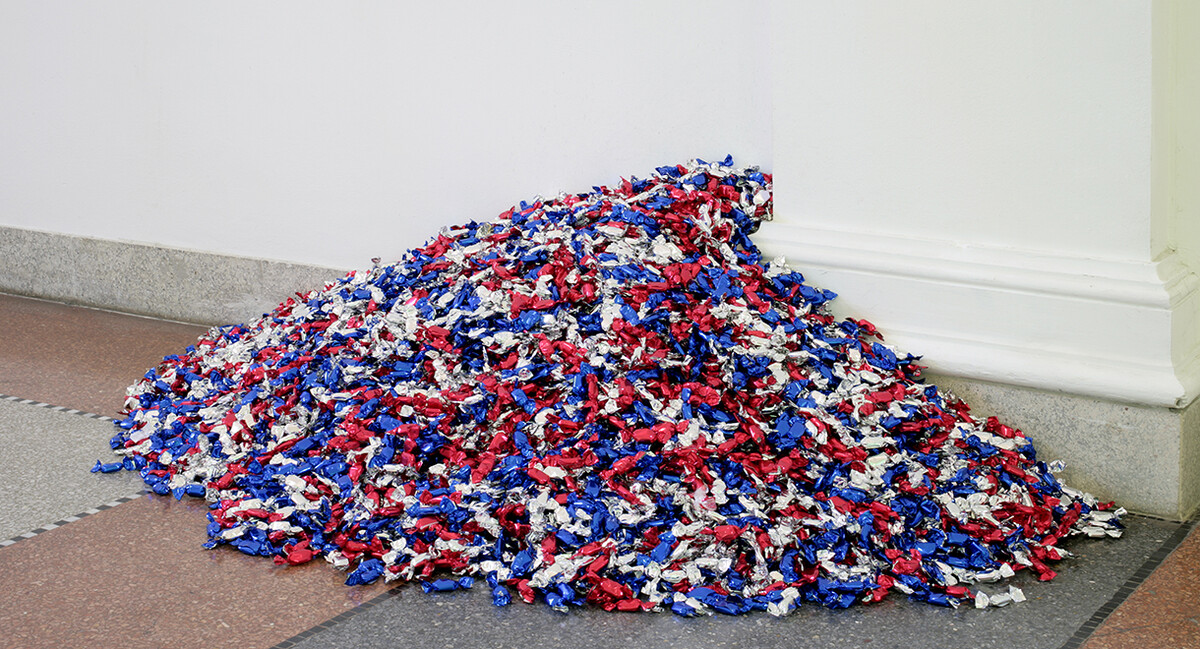
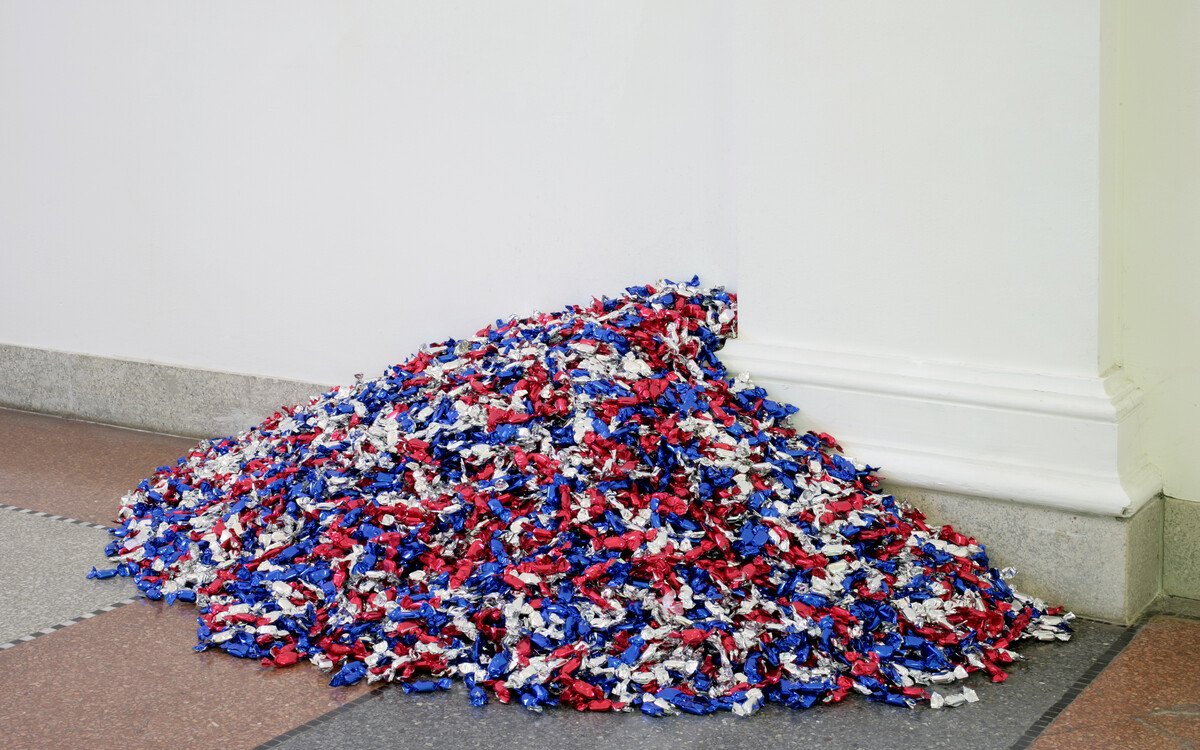

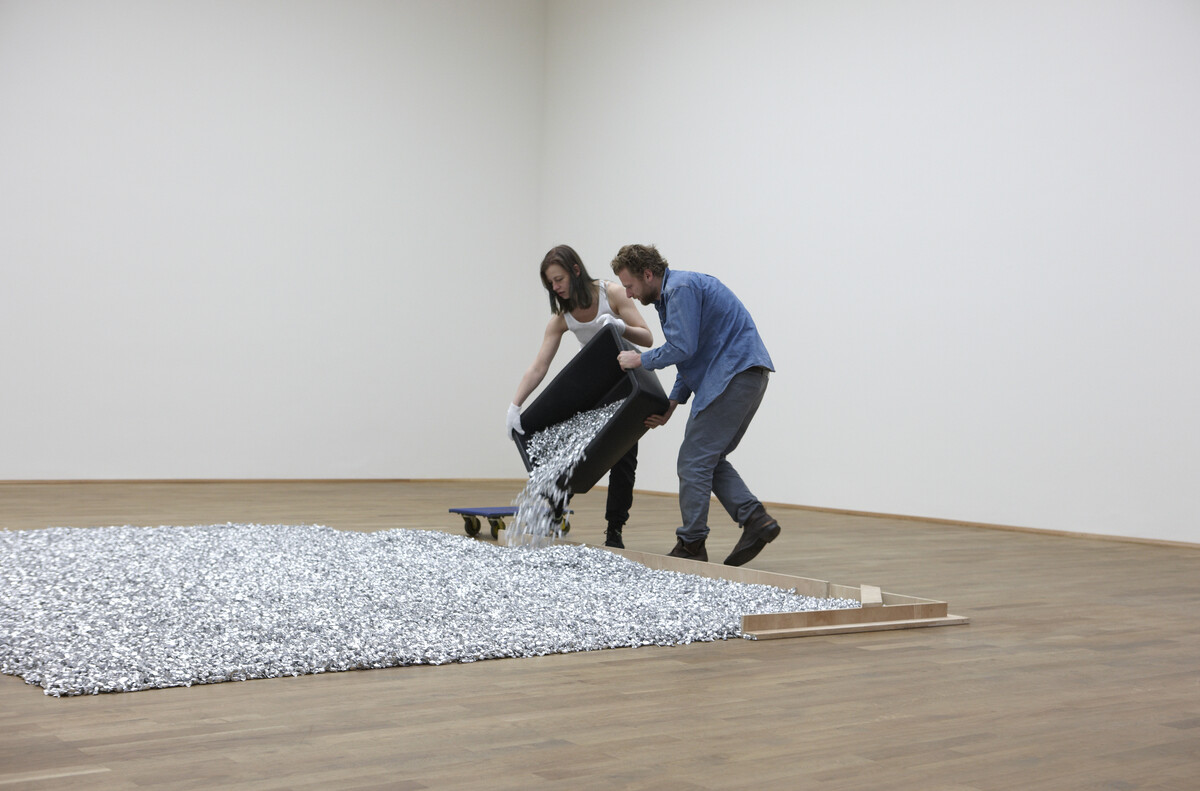

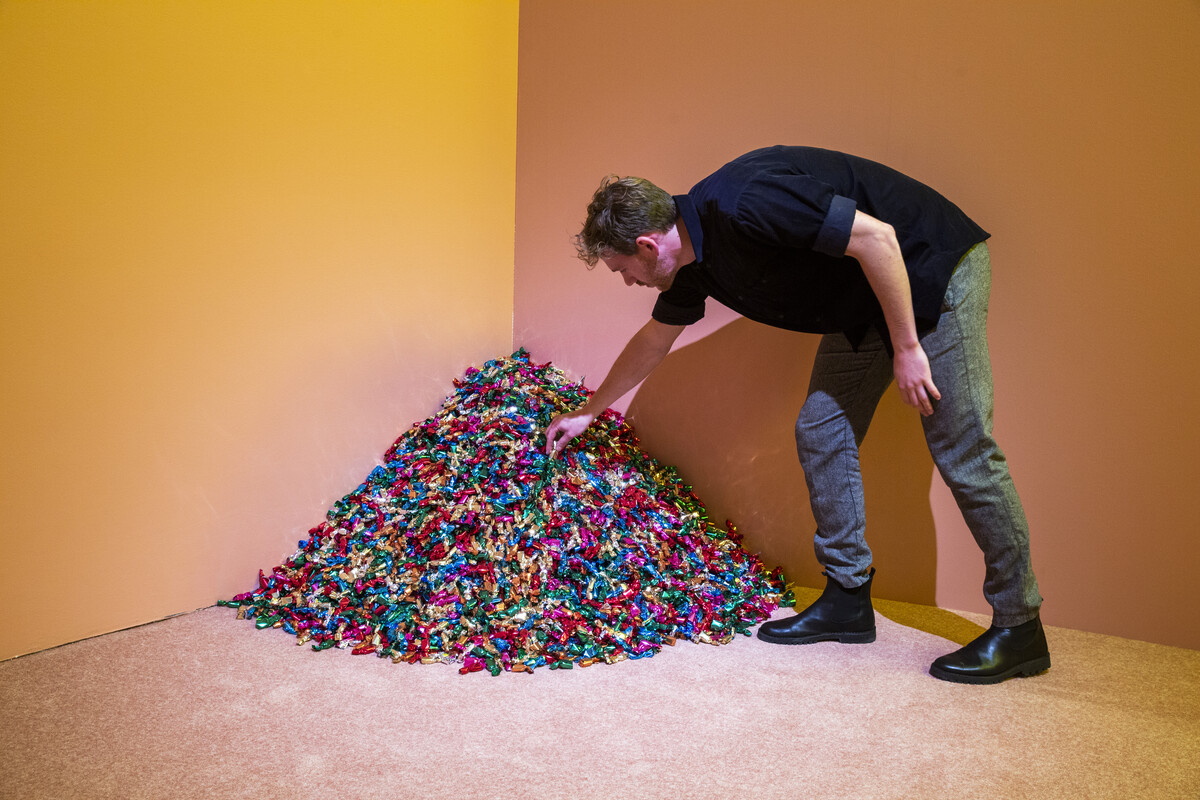
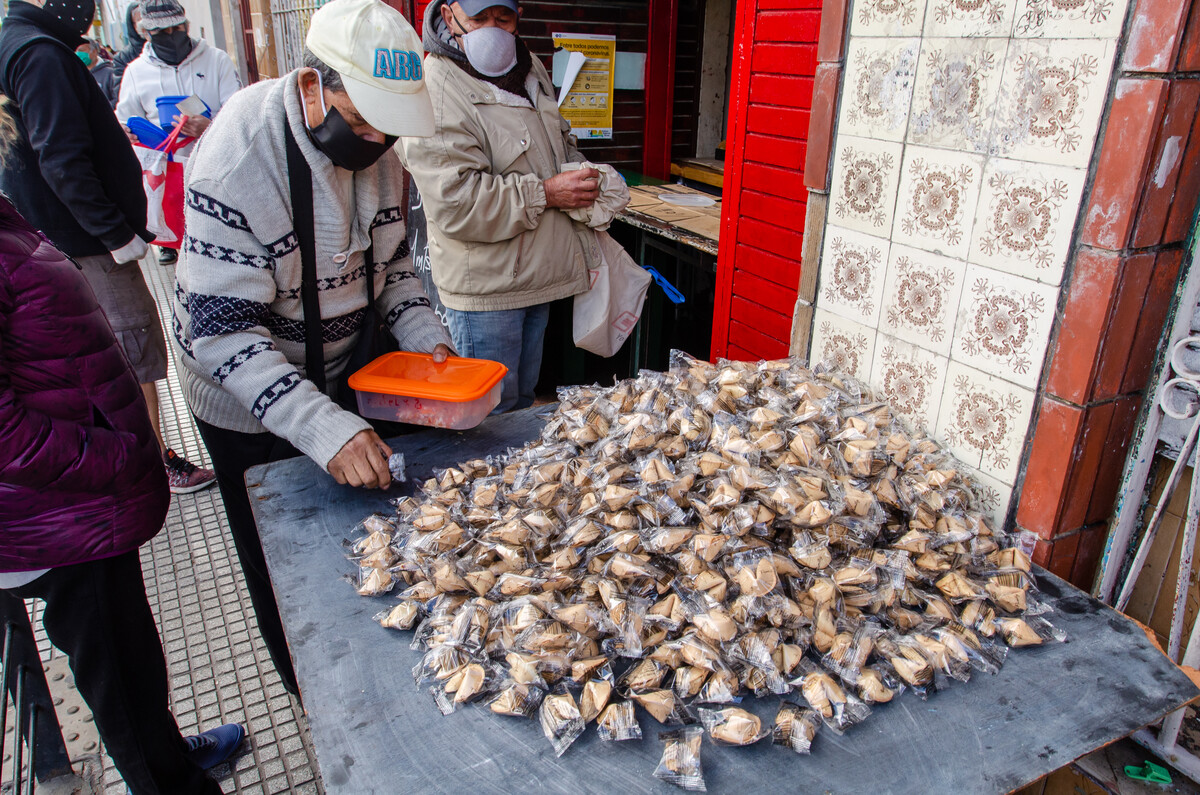
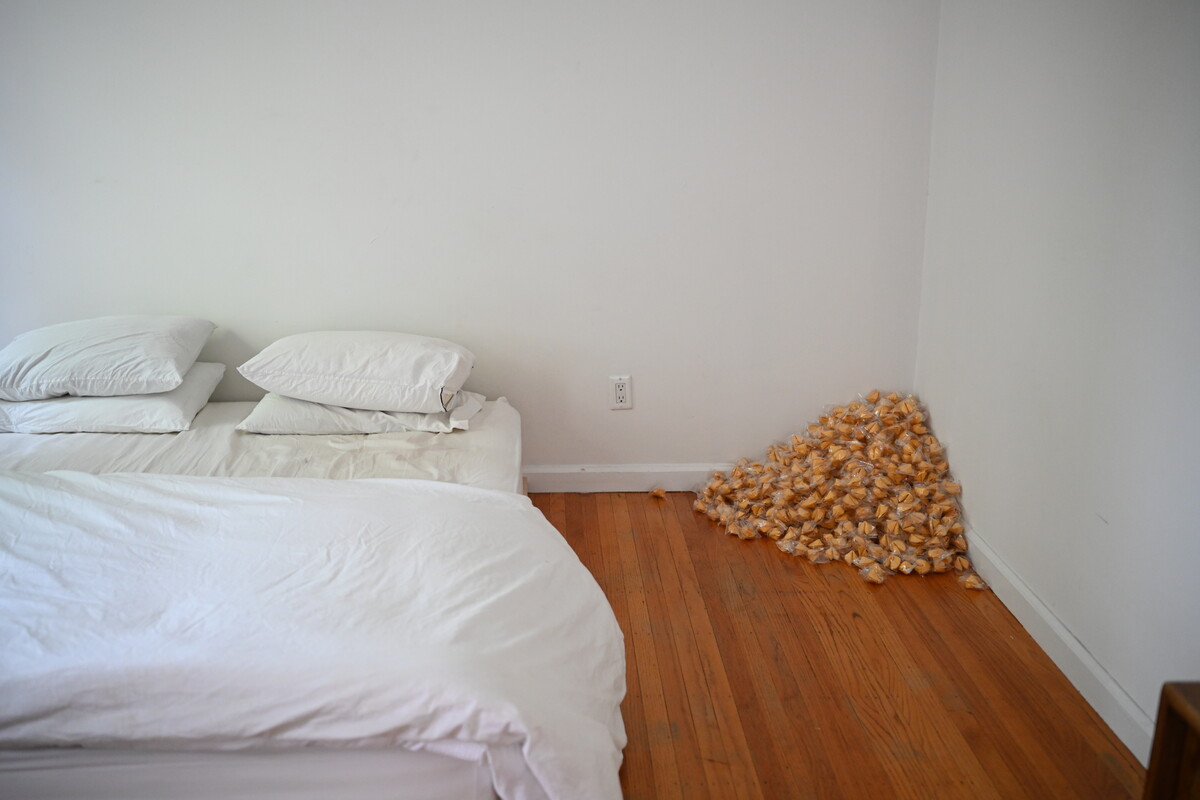
-11_feature.jpg)

